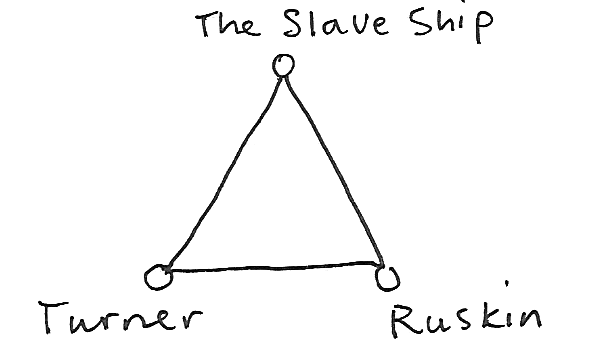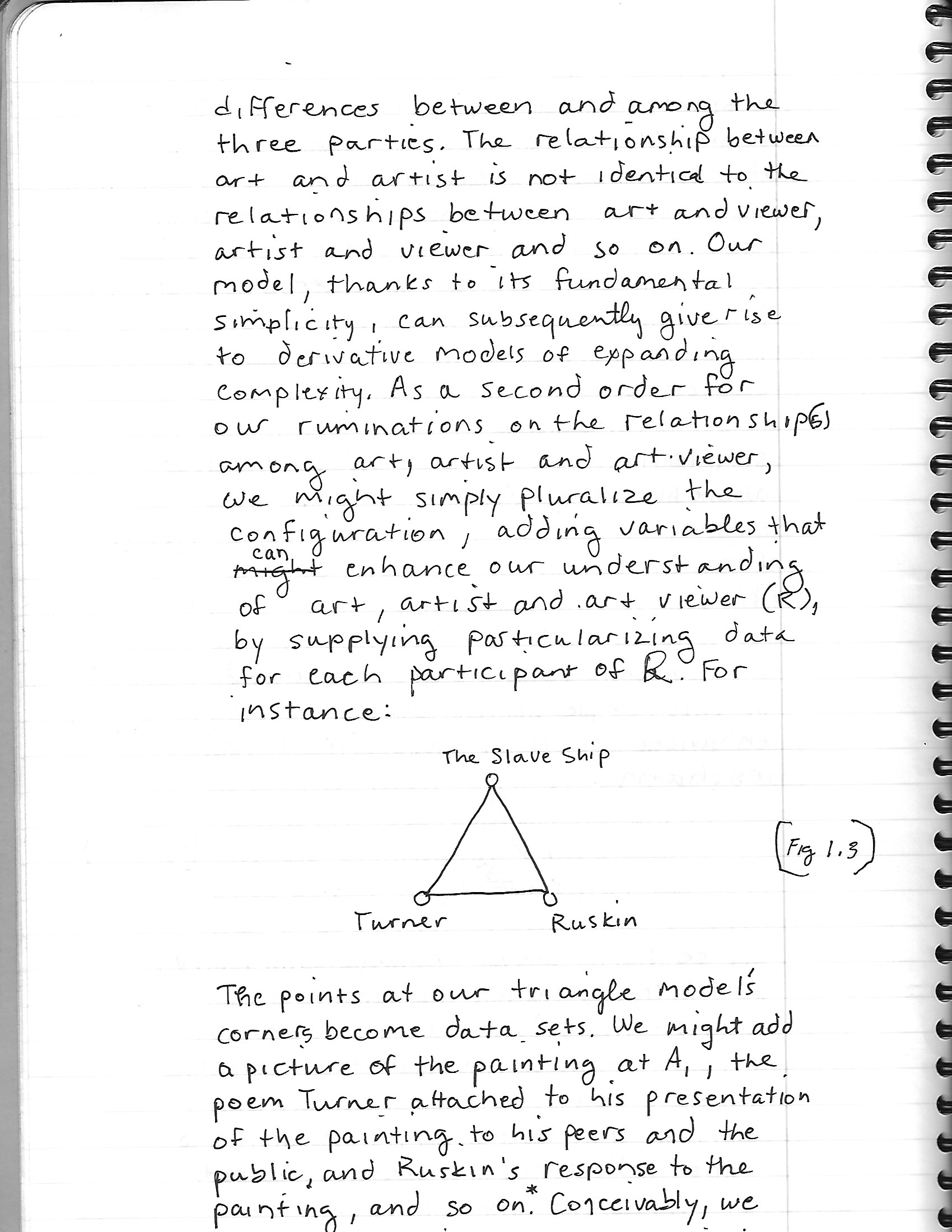differences between and among the three parties. The relationship between art and artist is not identical to the relationships between art and viewer, artist and viewer, and so on. Our model, thanks to its fundamental simplicity, can subsequently give rise to derivative models of expanding complexity. As a second-order for our ruminations on the relationship(s) among art, artist and art-viewer, we simply pluralize the configuration, adding variables that can enhance our understanding of art, artist and art-viewer [R], by supplying particularizing data for each participant of R. For instance:

The points of our triangle model's corners become data sets. We might add a picture of the paint at A1, the poem Turner attached to his presentation of the painting to his peers and the public, and Ruskin's response to the painting, and so on.* Conceivably, we
